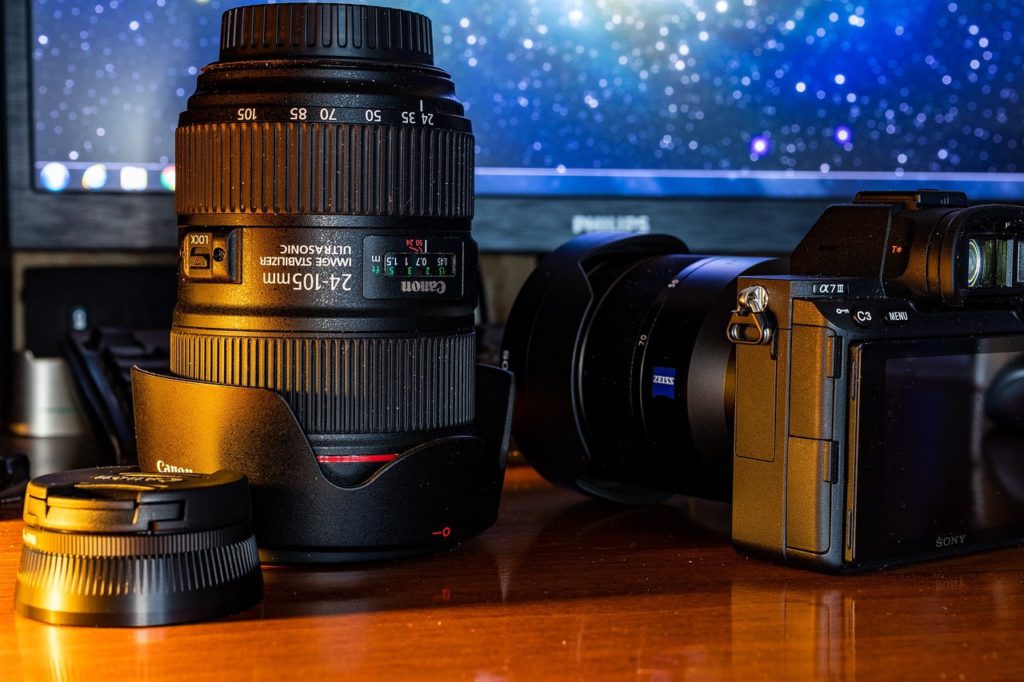When it comes to high-tech cameras, many professionals have the dilemma – do they choose mirrorless or DSLR? There’s a key difference – the mirror, of course.
When choosing a camera, photographers often find themselves deciding between a DSLR (Digital Single-Lens Reflex) and a mirrorless camera. Both types have their own sets of advantages and disadvantages, and understanding these can help.
It’s important you can make an informed decision based on your needs. This article will delve into the key differences between DSLRs and mirrorless cameras, helping you decide which might be the best fit for you. Remember, it’s personal preference.
What is a DSLR?
Digital Single-Lens Reflex (DSLR) cameras have been the standard for professional photography for many years. They use a mirror mechanism to reflect light from the lens up into an optical viewfinder. When you press the shutter button, the mirror flips up, allowing light to hit the image sensor and capture the photograph.
What is a mirrorless camera?
Mirrorless cameras, as the name suggests, do not have a mirror mechanism. Instead, light passes directly from the lens to the image sensor, and an electronic viewfinder (or the LCD screen) displays a live preview of the scene. Due to taking this element away, a mirrorless camera essentially has fewer components and less to do.
Key differences between DSLRs and mirrorless cameras
1. Size and weight
- DSLRs:
- Generally larger and heavier due to the mirror and optical viewfinder mechanism.
- The size can be an advantage for stability, especially with larger lenses.
- Mirrorless cameras:
- More compact and lighter because they lack the mirror and optical viewfinder.
- Easier to carry around, making them ideal for travel and street photography.
2. Viewfinders
- DSLRs:
- Use an optical viewfinder (OVF) that provides a direct optical view through the lens.
- Offers a clear, lag-free view of the scene, even in bright light.
- Mirrorless cameras:
- Use an electronic viewfinder (EVF) or the LCD screen to display a digital image of what the sensor sees.
- Can show real-time effects of settings like exposure, white balance, and depth of field.
3. Autofocus systems
- DSLRs:
- Typically use phase detection autofocus, which is fast and accurate, especially in good lighting conditions.
- Advanced models perform well in low-light situations, but entry-level models may struggle.
- Mirrorless cameras:
- Use a combination of contrast detection and phase detection autofocus on the sensor, known as hybrid autofocus.
- Generally faster and more accurate in various lighting conditions, with continuous improvements in technology.
4. Battery life
- DSLRs:
- Generally have longer battery life because the optical viewfinder doesn’t use power.
- Can shoot more photos on a single charge compared to mirrorless cameras.
- Mirrorless cameras:
- Typically have shorter battery life due to the power consumption of the electronic viewfinder and LCD screen.
- Carrying extra batteries is often necessary for long shoots.
5. Lens and accessory options
- DSLRs:
- Have been around longer, so they have a broader range of lenses and accessories available.
- Lens mounts are standardised and have a large selection of third-party options.
- Mirrorless cameras:
- Increasingly extensive selection of lenses, with many high-quality options.
- Adapters are available to use DSLR lenses on mirrorless bodies, expanding the possibilities.
6. Image quality
- DSLRs:
- Historically offered better image quality, especially in low light, due to larger sensors and more advanced technology.
- Differences are now minimal as mirrorless technology advances.
- Mirrorless cameras:
- Comparable to DSLRs in terms of image quality, with some models offering superior performance.
- Continuous improvements in sensor technology have closed the gap.
7. Video capabilities
- DSLRs:
- Many offer high-quality video recording, but autofocus in live view mode can be slower.
- Larger bodies can be easier to stabilise for video shooting.
- Mirrorless cameras:
- Generally better suited for video with faster, more accurate autofocus.
- Many models offer advanced video features like 4K recording, high frame rates, and in-body stabilisation.
Choosing between a DSLR and a mirrorless camera depends on your specific needs and preferences. DSLRs offer a traditional shooting experience with robust battery life and a wide range of lenses, making them a reliable choice for many photographers.
Mirrorless cameras, on the other hand, provide a compact, lightweight design with advanced features and excellent video capabilities, making them ideal for modern, versatile shooting. As technology continues to advance, the differences have become less pronounced.
Both types of cameras are capable of producing high-quality images and have their own unique strengths. Consider what features are most important to you and how you plan to use the camera to make the best choice for your photography journey.







